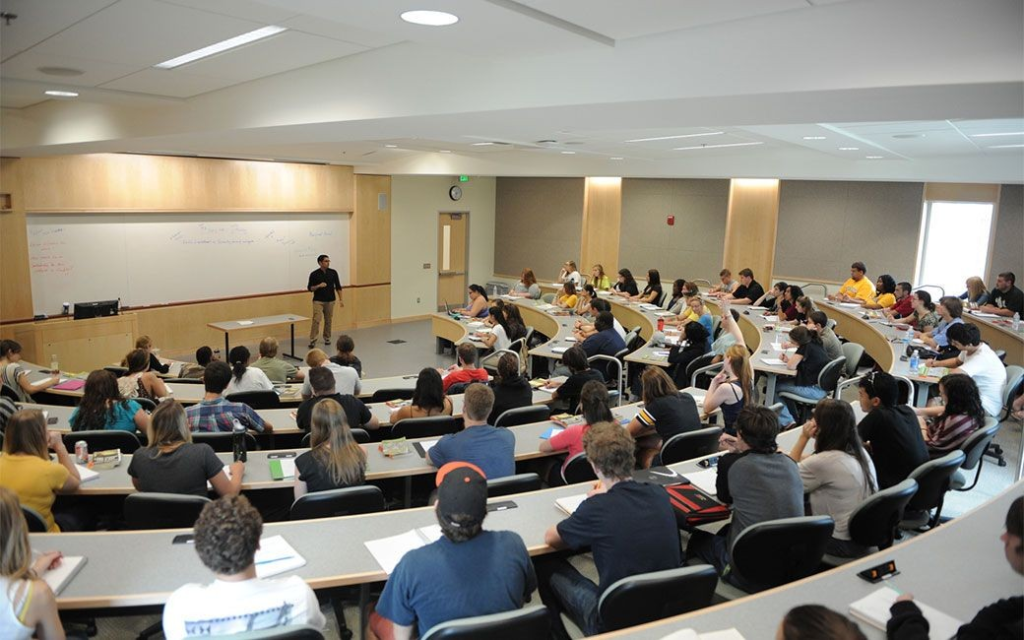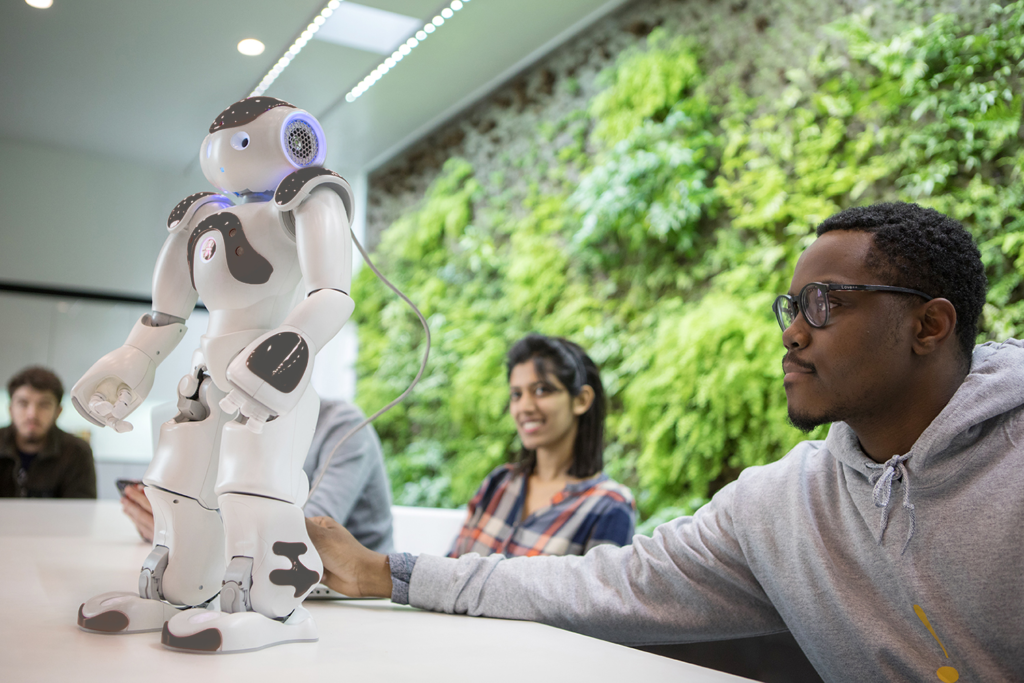What is the future of education?
Introduction
For one of my classes, Entrepreneurial Design Thinking, we were tasked with creating the ideal university experience. The prompt required us to gather secondary research from interviewing students, teachers, and employers to synthesize the most desired aspects of attending college and knit them together to create the perfect college experience.
My group had a few key findings: real-world exposure, flexibility with scheduling, fluidity and exposure to defining a major, and customized teaching styles were the most important aspects to consider when creating this ideal university. One takeaway that relates to this course was the implementation of robotic teachers, TAs, and advisors. These bots allowed for flexible scheduling, constant availability, and customized teaching for students.
After realizing the benefits that robotic teachers could add to universities, I decided to research more about these bots for this blog post and get a holistic perspective of the value, limitations, and future of this novel technology.
The Bots
It is no surprise that robots are being introduced into various industries as the use of AI and RPA has had an exponential impact on productivity. An industry that is seeing an increase in the use of robots is education and while the idea of robot teachers may seem far-fetched, it’s becoming more and more of a reality.
Robot teachers use machine learning algorithms to analyze student data, such as test scores and homework assignments, to identify areas where the student may be struggling. Based on this information, the robot teacher can tailor its teaching methods to meet the individual needs of each student. This can include providing additional resources or presenting material in a different way to better suit the student’s learning style. As the robot teacher continues to gather data on each student’s progress, it can continue to adjust its teaching methods to ensure that the student is receiving the most effective education possible.

Benefits
One of the main benefits of robot teachers is their ability to create personalized teaching plans for each student and their needs. With the use of machine learning algorithms, robots can analyze student data and tailor their teaching methods to the individual needs of each student. This can lead to a more effective learning experience overall.
Availability is another important advantage of robotic teachers. Unlike human teachers, robots can be available 24/7, meaning students can have access to educational resources at any time. This can be especially beneficial for students who work or have other obligations outside of school.
Another potential use for robot technology in universities is in the area of advising. Many students struggle to navigate the complex processes of course selection, degree planning, and career preparation. Robot advisors could use machine learning algorithms to analyze student data and provide personalized recommendations for each student. This includes suggesting courses that align with a student’s interests and career goals, as well as providing guidance on internships and job opportunities. With the help of robot advisors, students could receive more tailored support and guidance throughout their academic journey.
One area of curriculum where robot teachers can be particularly beneficial is in STEM (Science, Technology, Engineering, and Mathematics) fields. These subjects often require a lot of repetition and practice, which can be time-consuming for human teachers. Robot teachers, on the other hand, can provide instant feedback and assistance to students, allowing them to progress through the material more quickly.
Lastly, another advantage of robot teachers is their ability to reduce bias in education. Humans are often subject to unconscious biases, which can impact their teaching methods and interactions with students. Robots can provide consistent and objective feedback to all students, regardless of their race, gender, or background.

Drawbacks
On the contrary, there are also some potential drawbacks to using robot teachers. One concern is the lack of human interaction. While robots can provide personalized education, they cannot replicate the emotional connection that can occur between a student and a human teacher. The in-person class lectures allow for a more dynamic and interactive learning experience, as well as the opportunity to practice critical thinking and communication skills.
Another potential issue is the cost. While the initial investment in robot teachers may be high, it’s important to consider the long-term costs as well. Maintenance, upgrades, and repairs can all add up over time.


Summary
As the world grows increasingly reliant on technology, the use of robot teachers in universities is likely to become more and more common. These machines have the potential to revolutionize the field of education, allowing for more efficient and effective teaching methods. While the use of robot teachers is still in its early stages, it’s clear that they are capable of providing a unique and valuable learning experience for students.
Robot teachers can offer a number of advantages over traditional human teachers. They are not limited by physical constraints, meaning that they can be available to students 24/7. They can also easily adapt their teaching styles to suit the needs of individual students, providing a personalized learning experience that is tailored to each student’s strengths and weaknesses. Additionally, they can provide real-time feedback, allowing students to identify areas where they need to improve and adjust their approach accordingly.
However, it’s important for universities to consider how they can best utilize these tools to provide the most effective education possible. While robot teachers are certainly a promising development, they should not be used to replace human teachers entirely. Instead, a combination of both traditional and innovative teaching methods should be used to provide students with a well-rounded and effective education which is the conclusion that my design thinking group came to, to create the ideal university. As universities continue to explore the possibilities of this technology, it will be interesting to see how it evolves and impacts the way we learn.
